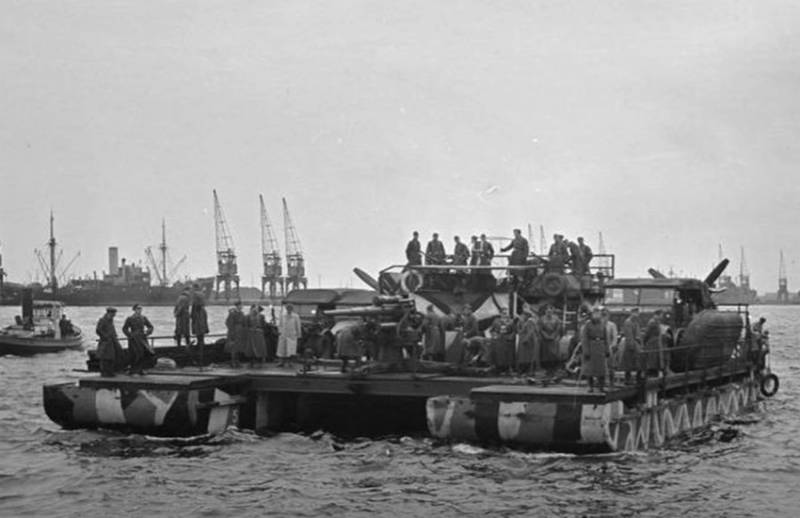Pontoons with aircraft motors: Siebel ferries for a possible crossing of the English Channel
When studying the issue of a possible landing of German troops in the British Isles and the transition from an exchange of air strikes to a full-scale war against England, a serious problem was discussed in Berlin. Given the presence of a considerable number of sea transports, Nazi Germany had a clear shortage of such ships that could be used in a full-scale amphibious operation. Often, the landing operation of the Nazis looked like this: a transport with thousands of soldiers approached the place near the coast where the depth allowed, after which small boats were used, many of which were not at all adapted for the operational transfer of the landing. As a result, such an operation could be successful only if the enemy did not offer noticeable resistance. And it was carried out "indecently" for a long time.
The German command began to think about the need to create such amphibious means that would make it possible to cross the English Channel during the proposed invasion of Britain. An initiative was voiced about the possibility of using ferries.
In the end, a man who was associated with a completely different element - with the sky - developed suitable means for airlifting troops by water. This is Luftwaffe officer Friedrich W. Siebel, who had an engineering degree.
Siebel ferries could travel at speeds up to 4 knots. For this, the designer decided to equip pontoons with aircraft motors used as ferries.
There was also a special version of the ferry, which could reach speeds of up to 8 knots and be used to transport not only personnel, but also cargo.
Siebel ferries are described in a video on the Starina YouTube channel:

Information